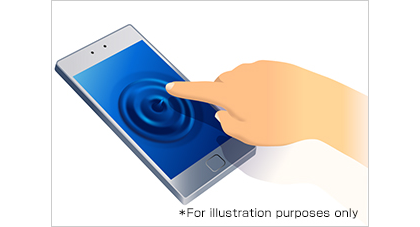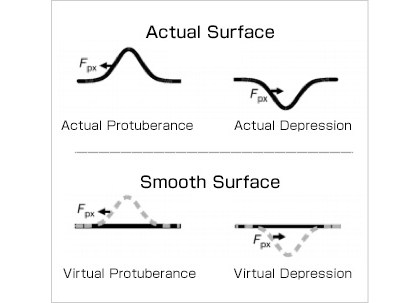Implemented Solutions
Pushing the Limits of Miniaturization with our Ultra-Thin & Ultra-Small Fans
State-of-the-Art Devices that Revolutionize
the Interface Between Humans and Machines./p>

Tactile devices convey sensations like pressure, vibration, motion, heat and static electricity to the fingertips of their users.Typically, there is no physical feedback when pressing a button shown on the touchscreen of a smartphone making it difficult for the user to determine whether their input has been registered by the device. This problem can be solved by the use of tactile devices that recreate the feeling of pressing an actual button by making the screen vibrate when pressed. In addition, by changing the way that the vibration is transferred to the user depending on which area of the screen is pressed it becomes possible for the user to distinguish between multiple buttons displayed on the same screen. Furthermore, methods of producing complex and distinct touch sensations through different ways of vibration are currently also being researched.

A particular type of feedback focused on by NIDEC PRECISION is the phenomenon known as lateral force fields. By changing the characteristics of an ongoing horizontal vibration, an actually flat surface can be perceived to have depth when touched.
This phenomenon can be utilized in a wide variety of interface applications. The sensation of clicking a physical button, the feeling of a rough or a silky smooth surface can be experienced by the skin of the user; all while the actual surface remains flat.
Tactile devices making use of this illusion have already been implemented and are currently at use in some end products that have reached the market.
Conventional smartphones make use of eccentric rotating mass vibration motors or vertical linear actuators. However, as these devices are unable to cause horizontal vibration, they are unable to efficiently generate lateral force fields and cause the illusion that enables users to experience depth in a flat surface.
Creating various illusions with lateral force fields requires accurate and precise control of start-up time, vibration amplitude and vibration frequency and presently this level of control is best achieved through a horizontal design.
Horizontal linear actuators are currently being researched by NIDEC PRECISION. Although we have a long track record of producing these tactile devices, we are determined to further improve and optimize them in order to launch even more innovative products in the future.

These Products Occupy a Dominant Position in the Tactile Device Field.


Developer's Comment
Horizontal linear actuators make it possible to make use of the lateral force field phenomenon in a wide range of different products. In addition to mobile devices such as smartphones and tablets, ATMs operated by banks and GPS navigation units etc. can also be equipped with these devices. For instance, applying this technology to ATMs can drastically improve the user experience of visually impaired users and equipping GPS navigation units with tactile devices makes it possible for drivers to operate them without taking their eyes of the road. Tactile devices can be used in a wide array of applications and their potential benefits are considerably high.